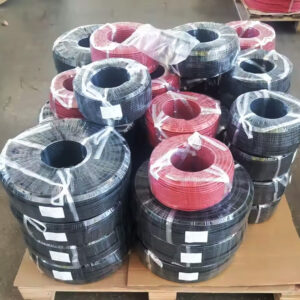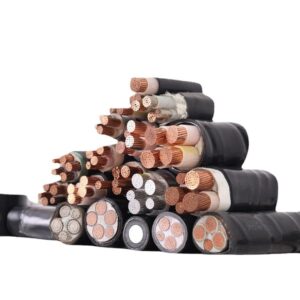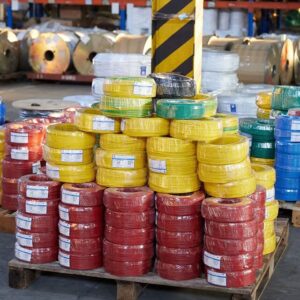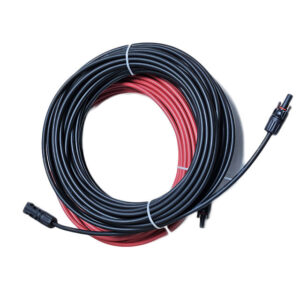Selecting the correct solar cable size is critical for the efficiency, safety, and longevity of your 10kW solar system. Undersized cables can cause overheating, energy loss, and fire hazards, while oversized cables add unnecessary costs. This guide breaks down key factors—voltage, current, distance, and environmental conditions—to help you make an informed decision.
1. Why Solar Cable Size Matters
Solar cables connect panels, inverters, and the grid, carrying DC and AC power. Key risks of incorrect sizing:
- Energy Loss: Voltage drop reduces system efficiency.
- Overheating: Excessive current can melt insulation.
- Compliance Issues: Violates electrical codes (e.g., NEC 690).
2. Key Factors Determining Cable Size
A. System Specifications
- Power: 10kW (10,000 watts).
- DC Voltage: Typically 400V–600V for residential/commercial systems.
- Max Current: Calculated as:textCurrent (A) = Power (W) / Voltage (V) Example: 10,000W ÷ 400V = 25A (DC side).
B. Voltage Drop
Limit voltage drop to <3% for efficiency. Use the formula:
text
Cable Size (mm²) = (2 × Distance × Current) / (Voltage Drop × Conductivity)
Note:
- Distance: Cable length from panels to inverter.
- Conductivity: Copper (56 m/Ω·mm²) vs. aluminum (35 m/Ω·mm²).
C. Environmental Factors
- Temperature: High heat reduces current capacity (use 90°C-rated PV wire).
- Sun Exposure: UV-resistant insulation is essential.
3. Recommended Cable Sizes for a 10kW System
Based on NEC 690 and IEC 60287 standards:
| Cable Segment | Current (A) | Distance | Recommended Size |
|---|---|---|---|
| PV Panels to Inverter (DC) | 25–30A | ≤30m | 6 mm² (10 AWG) |
| PV Panels to Inverter (DC) | 25–30A | 30–50m | 10 mm² (8 AWG) |
| Inverter to Grid (AC) | 42A* | ≤20m | 10 mm² (8 AWG) |
* *AC Current = 10,000W / 240V ≈ 42A (for split-phase systems)*.
Key Notes:
- Use tinned copper PV wire (e.g., PV1-F) for corrosion resistance.
- For longer runs (>50m), upsize cables to limit voltage drop.
4. Critical Standards & Certifications
- DC Cables: TUV 2 PfG 1169 or UL 4703 (weather/UV/fire resistance).
- AC Cables: NEC 690 compliance for grid connection.
- Insulation Rating: 90°C minimum for rooftop applications.
5. Common Mistakes to Avoid
- Ignoring Voltage Drop: Even with correct ampacity, long distances cause efficiency loss.
- Mixing AC/DC Cables: DC cables require higher UV/fire resistance.
- Skipping Derating: In hot climates, reduce cable’s current capacity by 20%.
6. Pro Tips for Installation
- Use MC4 Connectors: Pre-certified for waterproof DC connections.
- Conduit Protection: Shield cables in high-traffic areas.
- Label Both Ends: Simplify maintenance and troubleshooting.
Conclusion
For a 10kW solar system, 6–10 mm² (10–8 AWG) solar cables are typically ideal for DC runs, while 10 mm² (8 AWG) suits AC connections. Prioritize tinned copper conductors, UV-resistant insulation, and <3% voltage drop. Always consult local codes and a certified electrician.







